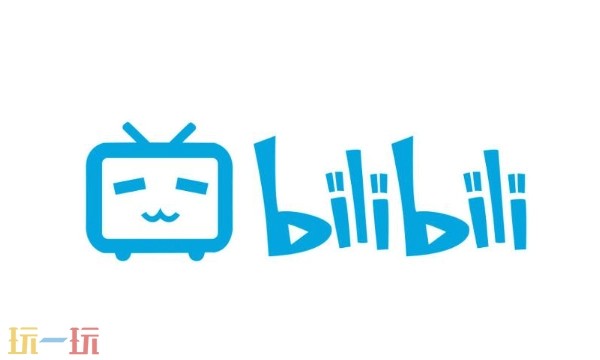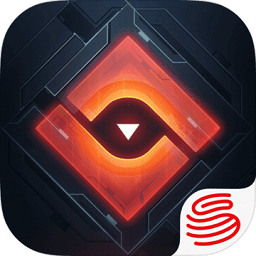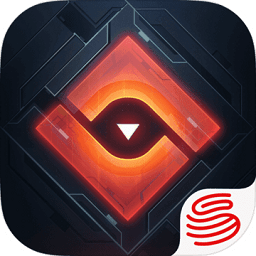NVIDIA 性能比较: Windows vs. Linux vs. Solaris
时间:2008-03-10 来源:linux论坛
Earlier this week we previewed the Quadro FX1700, which is one of NVIDIA's mid-range workstation
graphics cards that is based upon the G84GL core that in turn is derived from the consumer-class GeForce 8600 series. This PCI Express graphics card offers 512MB of video memory with two dual-link DVI connections and support for OpenGL 2.1 while maintaining a maximum power consumption of just 42 Watts. As we mentioned in the preview article, we would be looking at this graphics card's performance not only under Linux but also testing this workstation solution in both Microsoft Windows and Sun's Solaris. In this article today, we are doing just that as we test the NVIDIA Quadro FX1700 512MB with each of these operating systems and their respective binary display drivers.
The last time we had looked at the NVIDIA performance under both Linux and Windows was last July when comparing the GeForce 8 performance as the Linux drivers at the time were experiencing some initial performance issues with the G80 GPUs. Back in July there was a rather large performance delta between the two operating systems and drivers for the GeForce 8500GT and 8600GT, but the mature 6600GT had performed virtually the same in both environments. Then in September, we had looked at NVIDIA's multi-GPU performance under Linux and Windows when running two GeForce 8600GT 256MB graphics cards in SLI (Scalable Link Interface). Windows XP and the ForceWare driver had outpaced Linux in every gaming test we conducted.
When it comes to Solaris testing, the last time we had carried out any comparative NVIDIA tests was back in June when looking at a GeForce 8500GT 256MB on Fedora and Solaris. NVIDIA's Linux and Solaris drivers are virtually identical and as such, the performance was very close between Fedora 7 and Solaris Express Developer 5/07 and Solaris Express Community Edition Build 66.
screen.width*0.7) {this.resized=true; this.width=screen.width*0.7; this.alt='Click here to open new window\nCTRL+Mouse wheel to zoom in/out';}" onmouseover="if(this.width>screen.width*0.7) {this.resized=true; this.width=screen.width*0.7; this.style.cursor='hand'; this.alt='Click here to open new window\nCTRL+Mouse wheel to zoom in/out';}" onclick="if(!this.resized) {return true;} else {window.open('http://www.phoronix.net/image.php?id=nvidia_workstation_perf&image=nvidia_workstation_solaris');}" onmousewheel="return imgzoom(this);" alt="" />
For today's workstation testing we had run the NVIDIA Quadro FX1700 512MB on Ubuntu 8.04 Alpha 5, Solaris Express Developer 1/08, and Microsoft Windows Vista Ultimate. Ubuntu 8.04 uses the Linux 2.6.24 kernel and Solaris Express Developer Edition 1/08 is based upon Solaris Nevada Build 79b. Windows Vista was used over Windows XP because of compatibility problems with the Intel 5400 Chipset and Windows XP SP2. With each operating system we had used the latest supported NVIDIA drivers, which was 169.12 for Linux and Solaris and 169.25 for Windows Vista. During the testing, the screen resolution used was 1680 x 1050 and all settings from the NVIDIA drivers to the operating system were left at their defaults.
To benchmark these three operating systems and drivers we had used SPECViewPerf 9.0.3 to represent workstation use. SPECViewPerf 10.0 is not yet available for Linux/UNIX, which is why we are still using SPECViewPerf 9 for conducting these tests. We have published the results to all of the SPECViewPerf 9 tests: 3dsmax-04, catia-02, ensight-03, light-08, maya-02, proe-04, sw-01, ugnx-01, and tcvis-01. However, with the 3D Studio Max (3dsmax-04) test, Windows Vista was unable to complete the benchmark. SPECViewPerf is designed to be an OpenGL performance benchmark that is representative of real-world workstation performance through these different tests/view-sets such as 3D Studio Max, Maya, Pro/ENGINEER, and SolidWorks.
screen.width*0.7) {this.resized=true; this.width=screen.width*0.7; this.alt='Click here to open new window\nCTRL+Mouse wheel to zoom in/out';}" onmouseover="if(this.width>screen.width*0.7) {this.resized=true; this.width=screen.width*0.7; this.style.cursor='hand'; this.alt='Click here to open new window\nCTRL+Mouse wheel to zoom in/out';}" onclick="if(!this.resized) {return true;} else {window.open('http://www.phoronix.net/image.php?id=nvidia_workstation_perf&image=nvidia_workstation_sys');}" onmousewheel="return imgzoom(this);" alt="" />
Aside from the PNY Quadro FX1700 512MB, the other hardware components consisted of a Tyan Tempest i5400XT motherboard, 4GB of Kingston DDR2-533 FB-DIMM RAM (8 x 512MB), dual Quad-Core Intel Xeon E5320 processors, Western Digital 160GB SATA 2.0 16MB cache hard drive, SATA DVD-RW drive, and a Cooler Master Real Power Pro 1000W PSU.
screen.width*0.7) {this.resized=true; this.width=screen.width*0.7; this.alt='Click here to open new window\nCTRL+Mouse wheel to zoom in/out';}" onmouseover="if(this.width>screen.width*0.7) {this.resized=true; this.width=screen.width*0.7; this.style.cursor='hand'; this.alt='Click here to open new window\nCTRL+Mouse wheel to zoom in/out';}" onclick="if(!this.resized) {return true;} else {window.open('http://images.lampchina.net/news/10/4IOq3c6eP5z7FmwtQZD8UxXEbVMd9Wkr.png');}" onmousewheel="return imgzoom(this);" alt="" />
screen.width*0.7) {this.resized=true; this.width=screen.width*0.7; this.alt='Click here to open new window\nCTRL+Mouse wheel to zoom in/out';}" onmouseover="if(this.width>screen.width*0.7) {this.resized=true; this.width=screen.width*0.7; this.style.cursor='hand'; this.alt='Click here to open new window\nCTRL+Mouse wheel to zoom in/out';}" onclick="if(!this.resized) {return true;} else {window.open('http://images.lampchina.net/news/10/VBKk1QI4Cnr5o6MsfjmO9HFbpcY7gTGA.png');}" onmousewheel="return imgzoom(this);" alt="" />

screen.width*0.7) {this.resized=true; this.width=screen.width*0.7; this.alt='Click here to open new window\nCTRL+Mouse wheel to zoom in/out';}" onmouseover="if(this.width>screen.width*0.7) {this.resized=true; this.width=screen.width*0.7; this.style.cursor='hand'; this.alt='Click here to open new window\nCTRL+Mouse wheel to zoom in/out';}" onclick="if(!this.resized) {return true;} else {window.open('http://images.lampchina.net/news/10/KiN3jL71xM8h2EFlYq0yPU5OcIkt6ozV.png');}" onmousewheel="return imgzoom(this);" alt="" />
screen.width*0.7) {this.resized=true; this.width=screen.width*0.7; this.alt='Click here to open new window\nCTRL+Mouse wheel to zoom in/out';}" onmouseover="if(this.width>screen.width*0.7) {this.resized=true; this.width=screen.width*0.7; this.style.cursor='hand'; this.alt='Click here to open new window\nCTRL+Mouse wheel to zoom in/out';}" onclick="if(!this.resized) {return true;} else {window.open('http://images.lampchina.net/news/10/jwtkHJLyvVqXO8TKScrRsin1A7F6395U.png');}" onmousewheel="return imgzoom(this);" alt="" />
screen.width*0.7) {this.resized=true; this.width=screen.width*0.7; this.alt='Click here to open new window\nCTRL+Mouse wheel to zoom in/out';}" onmouseover="if(this.width>screen.width*0.7) {this.resized=true; this.width=screen.width*0.7; this.style.cursor='hand'; this.alt='Click here to open new window\nCTRL+Mouse wheel to zoom in/out';}" onclick="if(!this.resized) {return true;} else {window.open('http://images.lampchina.net/news/10/KaV1jcpYNPgrXQ2AhtURq6y84G57ELHJ.png');}" onmousewheel="return imgzoom(this);" alt="" />
screen.width*0.7) {this.resized=true; this.width=screen.width*0.7; this.alt='Click here to open new window\nCTRL+Mouse wheel to zoom in/out';}" onmouseover="if(this.width>screen.width*0.7) {this.resized=true; this.width=screen.width*0.7; this.style.cursor='hand'; this.alt='Click here to open new window\nCTRL+Mouse wheel to zoom in/out';}" onclick="if(!this.resized) {return true;} else {window.open('http://images.lampchina.net/news/10/tBJZfbMcgDhXp1jNlHGY4y7Lw6RaV8Sm.png');}" onmousewheel="return imgzoom(this);" alt="" />
screen.width*0.7) {this.resized=true; this.width=screen.width*0.7; this.alt='Click here to open new window\nCTRL+Mouse wheel to zoom in/out';}" onmouseover="if(this.width>screen.width*0.7) {this.resized=true; this.width=screen.width*0.7; this.style.cursor='hand'; this.alt='Click here to open new window\nCTRL+Mouse wheel to zoom in/out';}" onclick="if(!this.resized) {return true;} else {window.open('http://images.lampchina.net/news/10/oyim6dHPhkBc0SeAD2REYNaCbfQXVUL7.png');}" onmousewheel="return imgzoom(this);" alt="" />
screen.width*0.7) {this.resized=true; this.width=screen.width*0.7; this.alt='Click here to open new window\nCTRL+Mouse wheel to zoom in/out';}" onmouseover="if(this.width>screen.width*0.7) {this.resized=true; this.width=screen.width*0.7; this.style.cursor='hand'; this.alt='Click here to open new window\nCTRL+Mouse wheel to zoom in/out';}" onclick="if(!this.resized) {return true;} else {window.open('http://images.lampchina.net/news/10/uhYROA2UI96p0tCjbQVLe1rKlkdwzNgc.png');}" onmousewheel="return imgzoom(this);" alt="" />
screen.width*0.7) {this.resized=true; this.width=screen.width*0.7; this.alt='Click here to open new window\nCTRL+Mouse wheel to zoom in/out';}" onmouseover="if(this.width>screen.width*0.7) {this.resized=true; this.width=screen.width*0.7; this.style.cursor='hand'; this.alt='Click here to open new window\nCTRL+Mouse wheel to zoom in/out';}" onclick="if(!this.resized) {return true;} else {window.open('http://www.phoronix.net/image.php?id=nvidia_workstation_perf&image=nvidia_workstation_ubuntu');}" onmousewheel="return imgzoom(this);" alt="" />
With this being our first multi-platform Quadro comparison, going into the testing we were unsure which operating system would emerge as the leader in SPECViewPerf for representing real-world OpenGL workstation performance. Just nine months ago in our benchmarks of the GeForce 8600GT, which is the consumer counterpart to the G84GL-based FX1700, Microsoft Windows with the ForceWare driver had the upper-hand when it came to the quantitative performance. This, however, wasn't the case with today's benchmarking. Using the Quadro FX1700 512MB and the latest display drivers, Windows Vista wasn't the decisive winner, but the loser.
Ubuntu 8.04 Alpha 5 with the 169.12 driver had overall produced the fastest results within SPECViewPerf. In only three benchmarks had Solaris Express Developer 1/08 outpaced Ubuntu Linux, but with two of these tests the results were almost identical. These three tests were Maya (maya-02), UGS NX (ugnx-01), and UGS Teamcenter Visualization Mockup (tcvis-01). In the rest of the OpenGL tests, Solaris Express and Windows Vista were fighting for second place. In six out of the nine tests, Windows Vista was in last place. For those interested in NVIDIA's Quadro series for CUDA (Compute Unified Device Architecture; NVIDIA's GPGPU implementation), this technology is supported in NVIDIA's binary Linux driver.
We are continuing our workstation graphics investigation and we will be delivering more benchmarks in the coming days as we turn our focus to ATI/AMD and their high-end FireGL solutions under Linux and we will deliver comparative Windows results. If you have any additional test requests or would like more information, stop by the Phoronix Forums.
[ 本帖最后由 Send_linux 于 2008-3-10 16:22 编辑 ]










